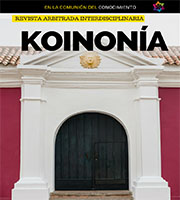Framework of Sociotechnological Projects development based on Metamodelos notation of software Engineering Processes (spem 2.0)
Keywords:
Framework, SPEM 2.0, systematic review, sociotechnological project, Metamodels.Abstract
Software Engineering is the fundamental basis for executing software development processes; they are governed by various methods that use a variety of tools and techniques. In Venezuela, there are methodological proposals: MeRinde (Methodology of the National Network for Integration and Development of Free Software), is a process model defined by the CNTI (National Center for Information Technologies) attached to the Ministry of Popular Power for University Education Science and Technology (MPPEUCYT) that develops the software process model according to phases, disciplines, activities and roles and for this it makes use of the Modeling Standard better known as UML (Unified Model Language) for the construction and obtaining of The different models in the different disciplines of software development. However, UML is not the only technique for the construction of the models and there are other notations that allow to model the processes in a much more detailed way, to promote the improvement of product quality and the improvement of its software process. The main objective of this research was to create a framerwork for the development of Sociotechnological Projects based on the notation of metamodels of software engineering processes (SPEM 2.0) adaptation of the MeRinde process model for the discipline Requirements and Analysis and Design. To that end, the research methodology of Hurtado y Toro (2005) was used, and information was collected through the questionnaire instrument and the Kitchenham Systematic Review approach (2008).
Downloads
References
Arraiz, A. (2012). Manual de ingeniería de software para elaborar proyectos sociotecnológicos del pnfi trayecto iii y iv basado en merinde y aspectos de calidad. Trabajo de Ascenso a Agregado. UPTP “LMR”. Carúpano. Sucre. Venezuela.
Comisión Técnica Programa Nacional de Formación en Informática. (2008).Documento Rector Programa Nacional de Formación de Ingeniería en Informática. Ministerio del Poder Popular para la Educación Universitaria, Caracas, Venezuela.
Guerrero, C., y Recaman, H., (2009). Marcos de Trabajo (Framework) para soportar el desarrollo de aplicaciones Web de código abierto, 10-25, (Sic) Editorial Ltda., Bucaramanga, Colombia.
Hurtado, I. y Toro J. (2005). “Paradigmas y Métodos de Investigación en Tiempos de Cambio”. Editorial CEC, s.a. Los Libros de El Nacional, Caracas.
Kitcheman, B. (2008). Systematic Literature Reviews in Software Engineering – A Systematic literature review Survey.
Marrero, C y Santos, K. (2007). Metodología de la Red Nacional de Integración y Software Libre (MeRinde). Centro Nacional de Tecnologías de Información. Venezuela.
Mills H. y O´ Neil, D. (1980).The Management of Software Engineering Part 1: Principles of software Engineering. IBM Systems Journal. USA.
Royce, W. (1970). A Spiral Model of Software Development. IEEE. Westcon.
Ruiz y Verdugo (2008). Ingeniería de procesos de Software. Universidad Cantabria. Ediciones.
Sommerville, I. (2005). Ingeniería del Software. Séptima Edición. Editorial Pearson/ Addison Wesley. España.
Downloads
Published
How to Cite
Issue
Section
License
CC BY-NC-SA : Esta licencia permite a los reutilizadores distribuir, remezclar, adaptar y construir sobre el material en cualquier medio o formato solo con fines no comerciales, y solo siempre y cuando se dé la atribución al creador. Si remezcla, adapta o construye sobre el material, debe licenciar el material modificado bajo términos idénticos.
OAI-PMH URL: https://fundacionkoinonia.com.ve/ojs/index.php/revistakoinonia/oai.









